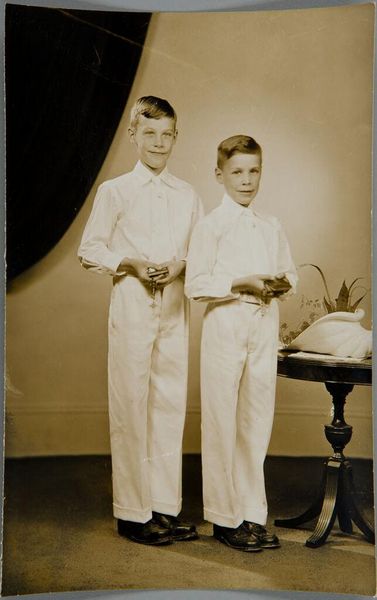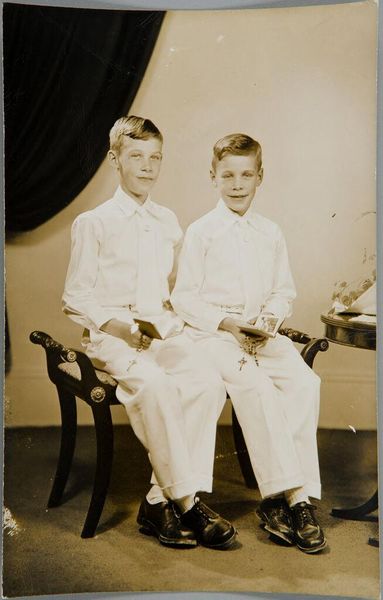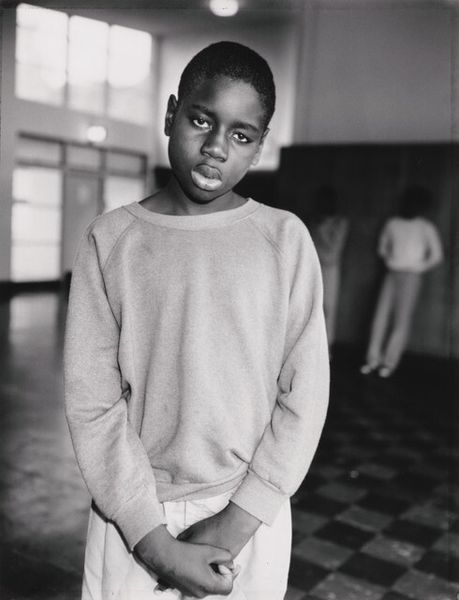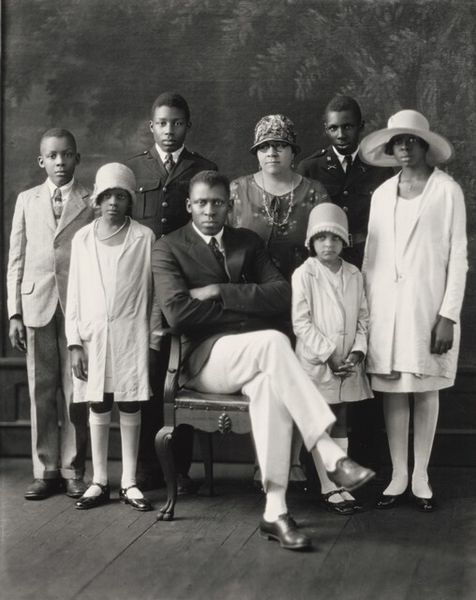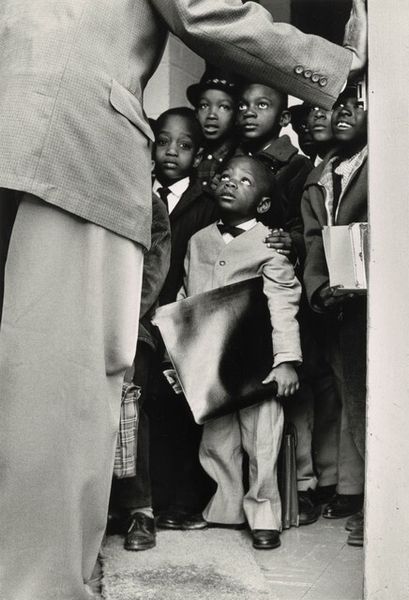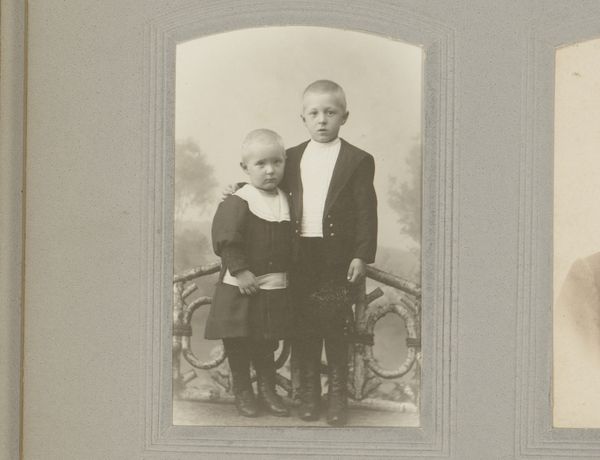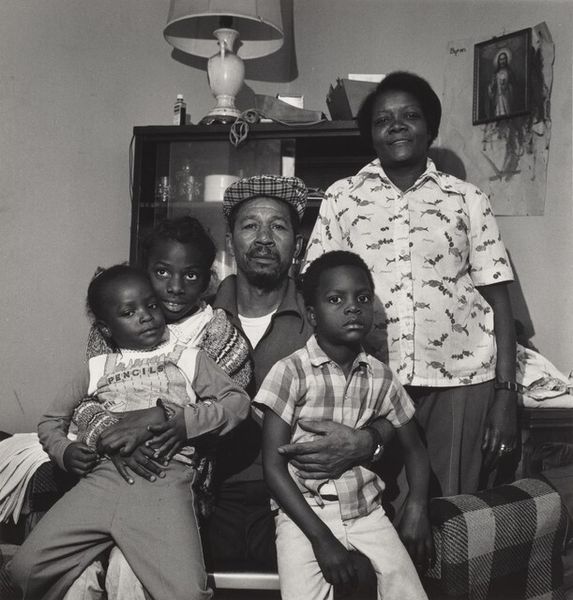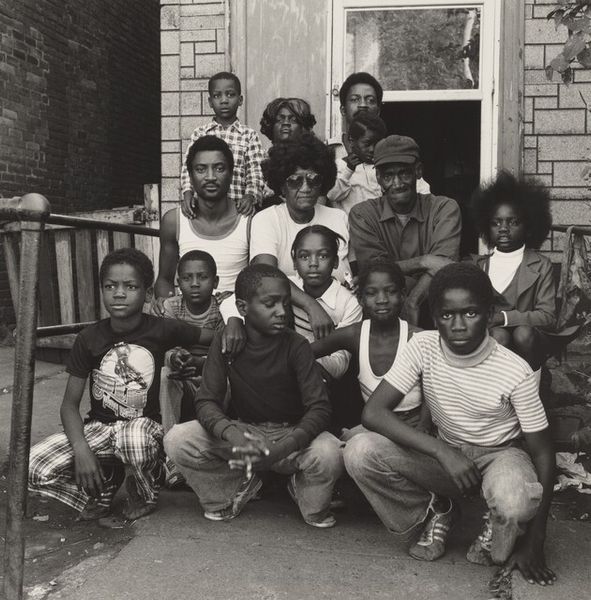
photography, gelatin-silver-print
#
portrait
#
black and white photography
#
photography
#
historical photography
#
black and white
#
gelatin-silver-print
#
monochrome photography
#
history-painting
#
monochrome
Dimensions: image: 31.9 × 22.2 cm (12 9/16 × 8 3/4 in.) sheet: 35.5 × 27.7 cm (14 × 10 7/8 in.)
Copyright: National Gallery of Art: CC0 1.0
Editor: This is "Theodore and Cornelius Polk," a gelatin-silver print by Prentice H. Polk, possibly taken sometime between 1936 and 1981. It strikes me as quite formal, almost theatrical, with the subjects posed against a painted backdrop. What compositional elements stand out to you? Curator: Immediately, I observe the rigorous symmetry. The bilateral arrangement of the two figures, identically dressed, establishes a visual rhythm. The monochrome palette enhances this formality, reducing the image to tonal relationships—observe how the crisp white shirts punctuate the somber black suits, creating a dynamic interplay of light and shadow. Note also how the backdrop, despite its pastoral intentions, flattens the pictorial space, directing the eye back to the subjects. What purpose does that symmetry and reduction serve, you think? Editor: Perhaps it emphasizes their unity or creates a sense of timelessness, moving away from mere representation. But are we losing any emotional depth with such stark formality? Curator: One could argue that emotionality is sublimated, not absent. It is redirected into the pure visual relationship between forms. Consider the slight variations in their posture, their subtle, distinct gazes. It creates a fascinating tension against the overwhelming symmetry, doesn't it? That’s also where the art emerges: the gelatin-silver medium is so finely captured here. It speaks to craft as well as conceptual choices. Editor: I see what you mean. Focusing on the pure relationships of form and tone allows for nuances to emerge that I might have missed. Thank you for clarifying it. Curator: And thank you, as well. It's valuable to engage fresh perspectives on what seems a familiar piece.
Comments
No comments
Be the first to comment and join the conversation on the ultimate creative platform.

